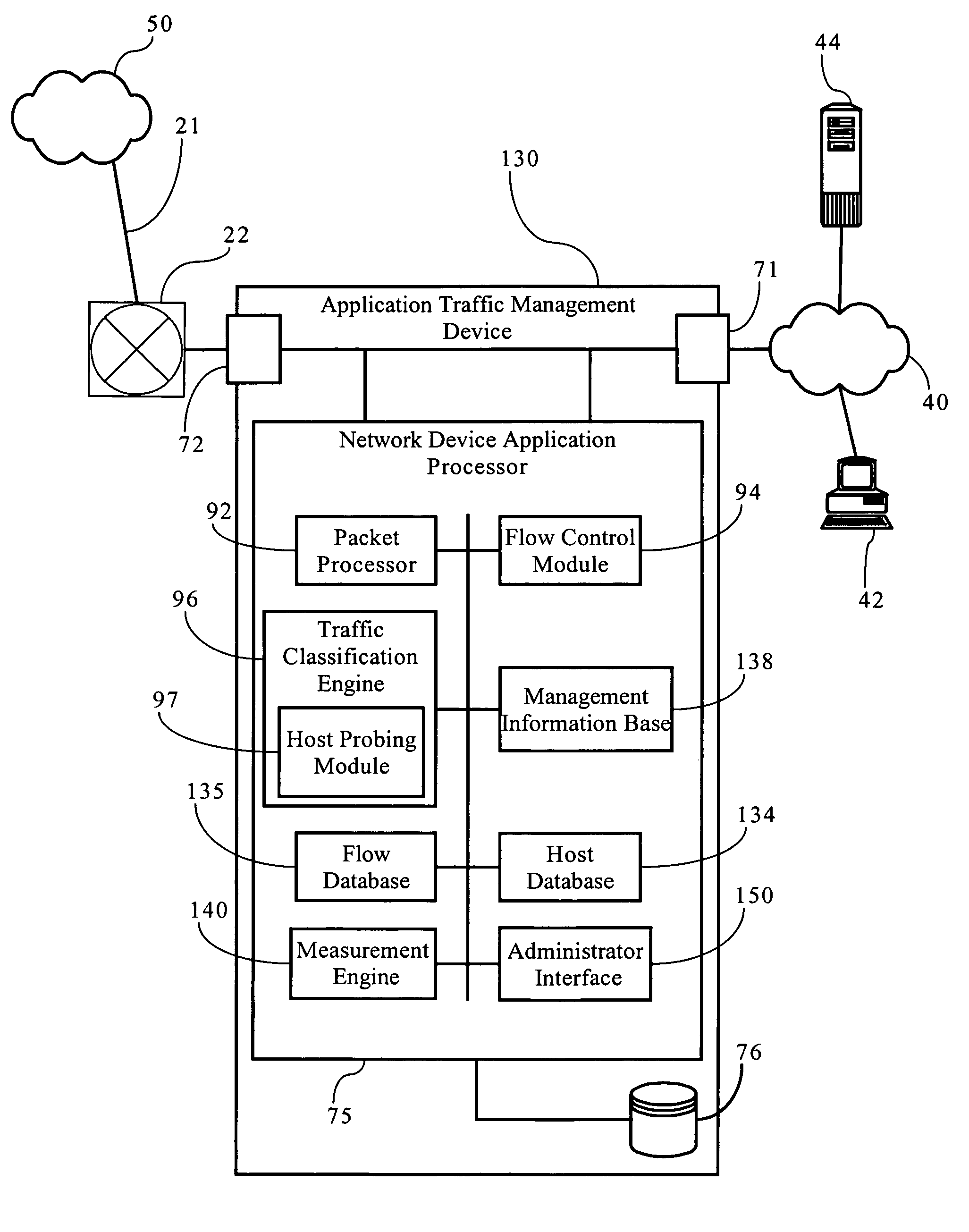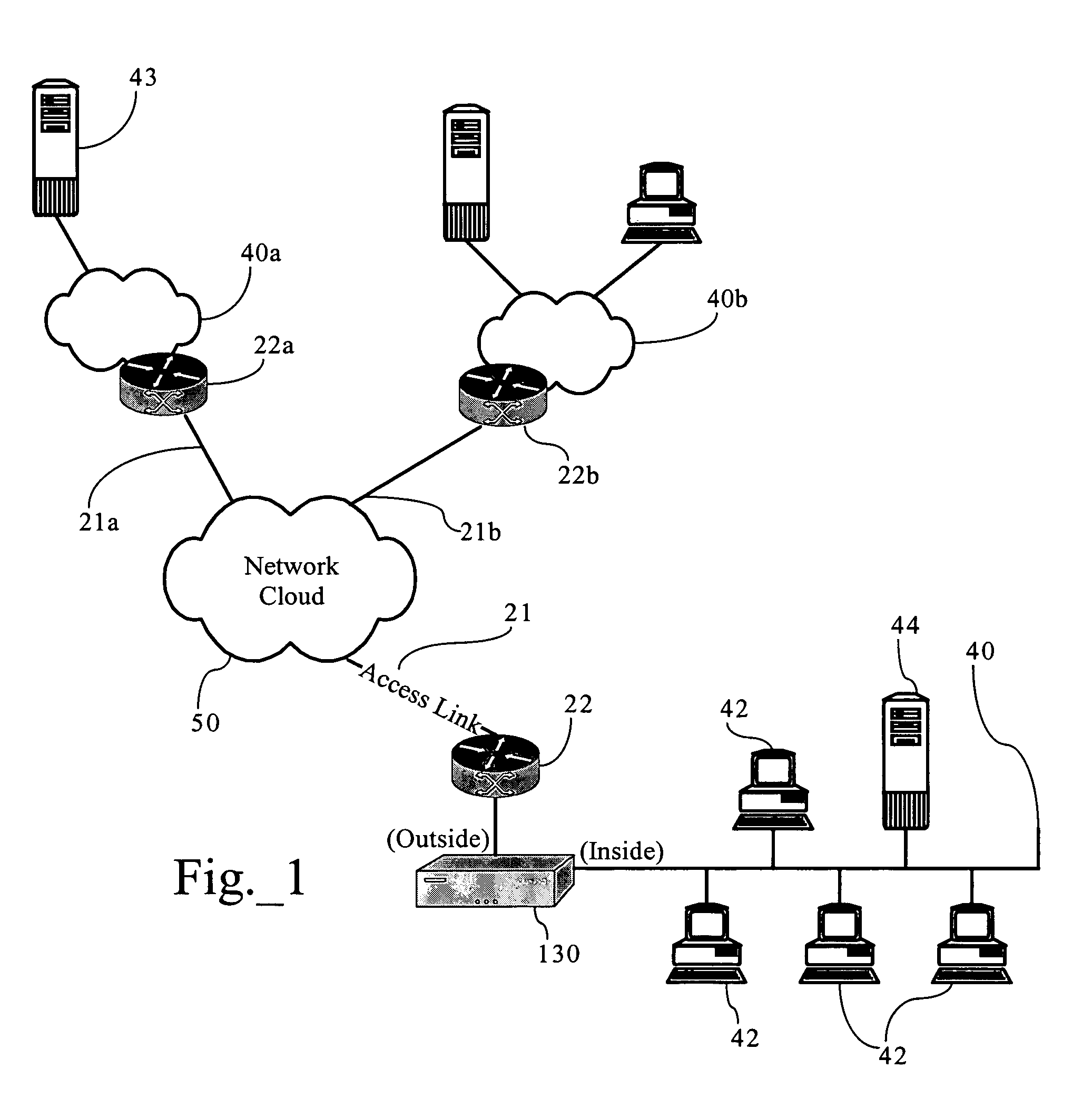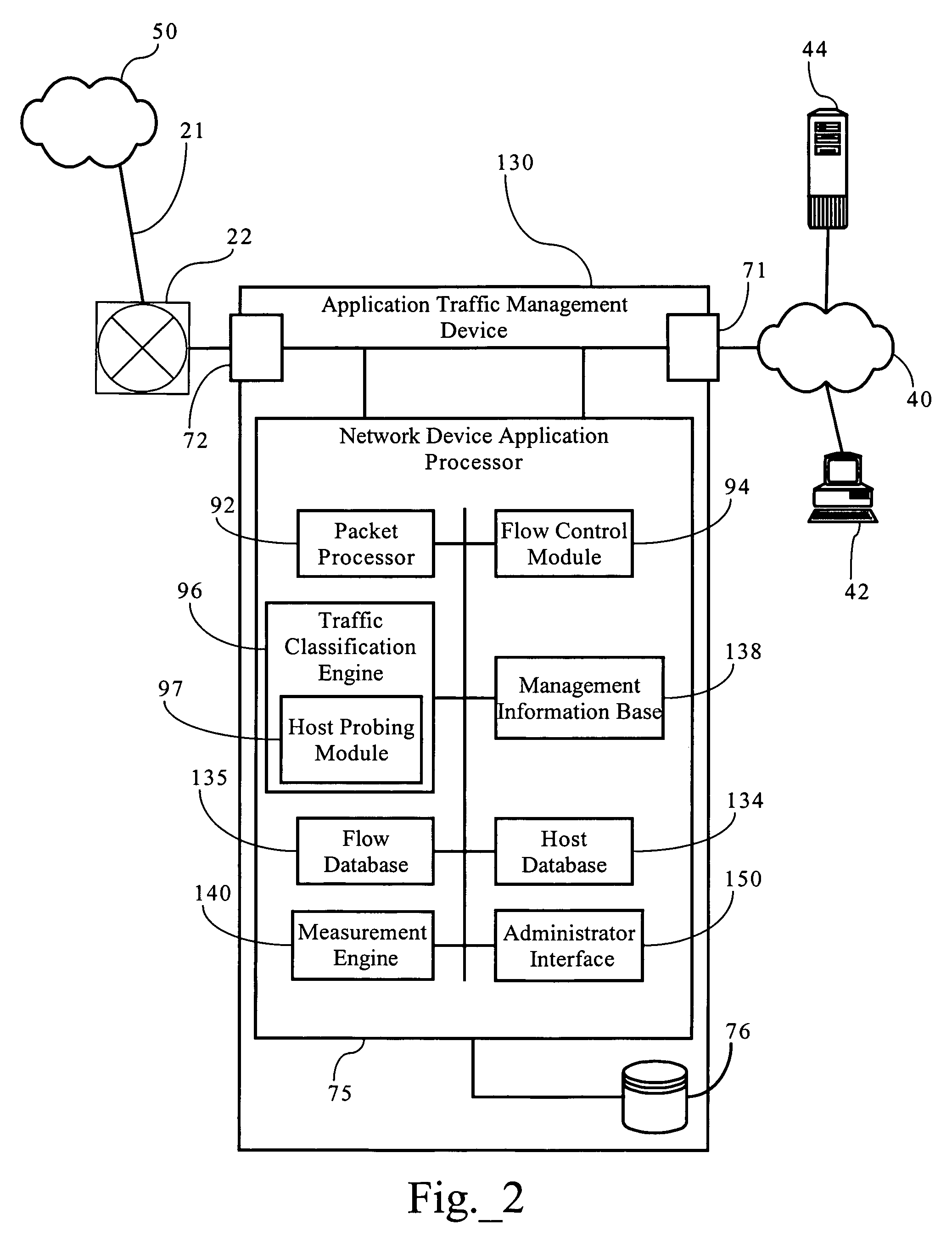Probing hosts against network application profiles to facilitate classification of network traffic
a network traffic and host technology, applied in the field of computer networks, can solve the problems of encrypted traffic suffering, misclassification of data flows, and much more difficult for intermediate network devices such as network monitors and bandwidth managers to identify the applications they employ, and achieve the effect of facilitating the classification of network traffi
- Summary
- Abstract
- Description
- Claims
- Application Information
AI Technical Summary
Benefits of technology
Problems solved by technology
Method used
Image
Examples
Embodiment Construction
)
[0043]FIGS. 1 and 2 illustrate an exemplary network environment in which an embodiment of the present invention operates. Of course, the present invention can be applied to a variety of network architectures. FIG. 1 illustrates, for didactic purposes, a network 50, such as wide area network, interconnecting a first enterprise network 40, supporting a central operating or headquarters facility, and a second enterprise network 40a, supporting a branch office facility. Network 50 may also be operably connected to other networks, such as network 40b, associated with the same administrative domain as networks 40, 40a, or a different administrative domain. As FIG. 2 shows, the first network 40 interconnects several TCP / IP end systems, including client devices 42 and server device 44, and provides access to resources operably connected to computer network 50 via router 22 and access link 21. Access link 21 is a physical and / or logical connection between two networks, such as computer netw...
PUM
 Login to View More
Login to View More Abstract
Description
Claims
Application Information
 Login to View More
Login to View More - R&D
- Intellectual Property
- Life Sciences
- Materials
- Tech Scout
- Unparalleled Data Quality
- Higher Quality Content
- 60% Fewer Hallucinations
Browse by: Latest US Patents, China's latest patents, Technical Efficacy Thesaurus, Application Domain, Technology Topic, Popular Technical Reports.
© 2025 PatSnap. All rights reserved.Legal|Privacy policy|Modern Slavery Act Transparency Statement|Sitemap|About US| Contact US: help@patsnap.com



